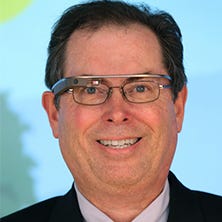The Mismatch Between Healthcare Software, Healthcare PeopleThe Mismatch Between Healthcare Software, Healthcare People
The workflow built into healthcare software must make processes better and not worse.

There have been a number of other solutions offered to the health IT workflow usability problem. Some have sterling qualities to recommend them, but they still won't fix this particular problem by themselves.
We need more customizable user interfaces, but that's only the beginning. We need more customizable workflows. I've seen individually usable and attractive screens that do not work together well with the other equally nice screens. How do we create a usable combination of screens? That's workflow. And it requires workflow technology to do right.
Open-source software will fix the usability problem. I'm a fan of open-source software, data, and philosophy. But I'm talking about open workflow. Much open-source health IT software still locks workflow into almost immutable hardcoded PHP, Python, or whatever computer program coding statements. Even proprietary workflow platforms have more open workflow than open-source platforms that do not rely on workflow technology. By the way, there are some great open-source workflow platforms out there.
User-centered design is the key. Clay Christensen, best known in the health IT industry for his ideas on disruptive technologies, thinks understanding users is a waste of time. Instead, we should understand their jobs -- their workflows. Even the father of user-centered/human-centered design, Donald Norman, has moved on and is arguing for an activity-centered design focusing on workflows.
Let's mandate usability certification. The biggest problem with this is that mandating software features and functionality has a lot to do with how we've ended up in our current health IT software mess. Let's not compound the error of our ways.
At CHIME 13, CIOs spoke of an enormous list of healthcare software projects preventing them from doing or thinking about anything else. If asked, "What about the users? They don't like the software you're installing," the honest response was "I know, but I have all these mandates to deal with that could sink our entire organization."
This is what we need to change. Workflow-oblivious technology isn't up to the task. We need process-aware technology that will make healthcare workflows easier, not harder. Healthcare CIOs must make the kind of thinking, doing, and breathing room they need to focus on improving the effectiveness, efficiency, and flexibility of healthcare workflow. In other words, they need to make the room to focus on making healthcare software users happier and more productive.
About the Author
You May Also Like






